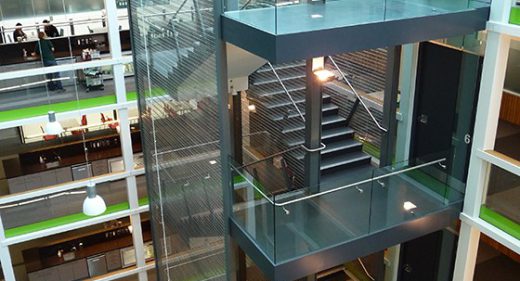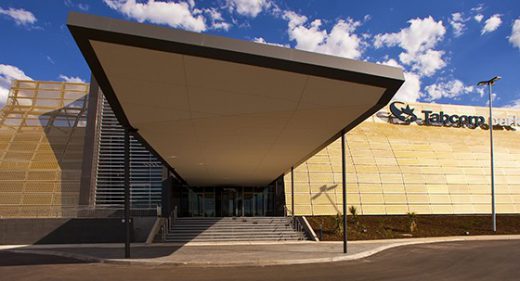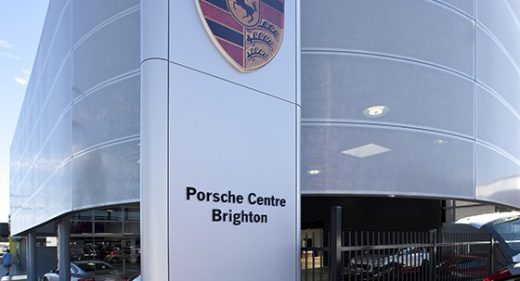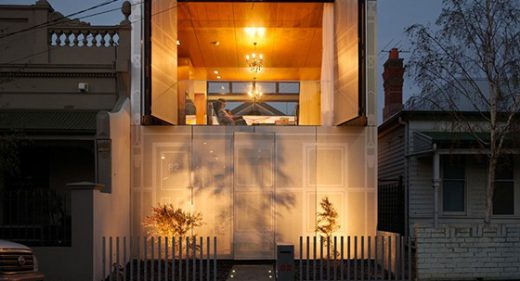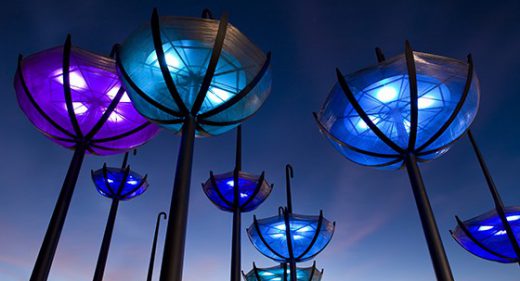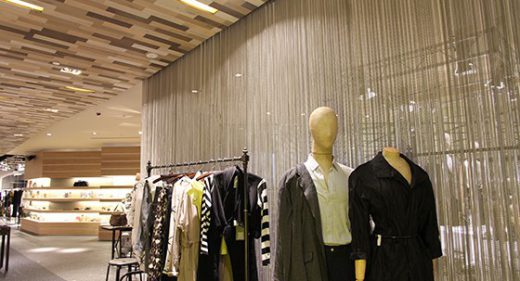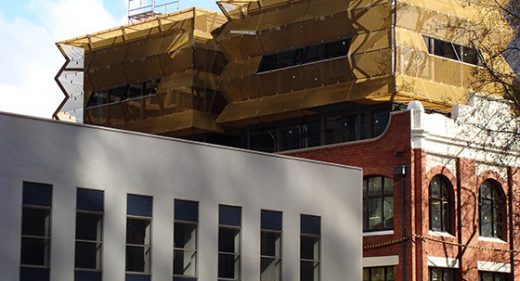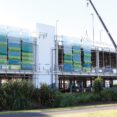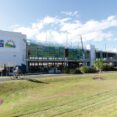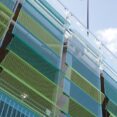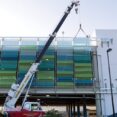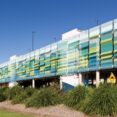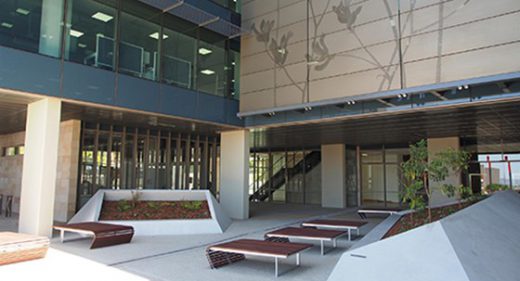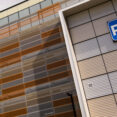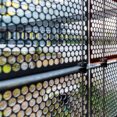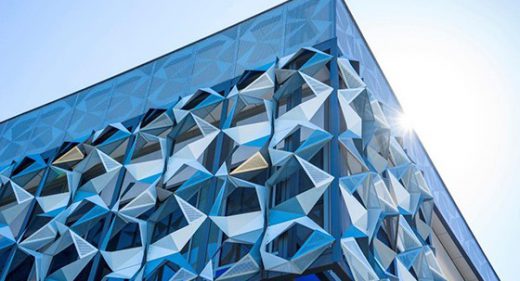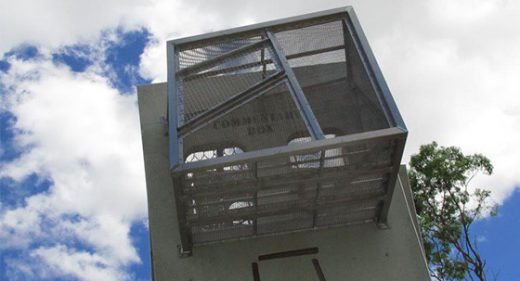Project Name: |
Vogel House |
Location: |
Wellington, NZ |
Architect: |
CCM Architects |
Developer: |
AMP Capital |
Application: |
Balustrade |
Specification: |
Transit F360 S/S |
Photography: |
Brent Robinson |
Scope
A high profile building in Wellington’s parliamentary precinct, Vogel House was part of a multi million dollar redevelopment project. It was de-signed to provide a ‘campus’ environment for the Ministry of Justice, among other occupants.
The developer, AMP Capital, was focused on refurbishing the 1960’s Vogel building, constructing a new seven-level, 17,300 square meter podium building on a car park next door, and connecting the two buildings via a six storey atrium.
Locker Group had the opportunity to assist in the design, and provide a screen for the stairwell which would be both decorative and functional.
Progression
The main focus of the Vogel House project was on the new development (which provided more than 33,000 square meters of office space) to enable the Ministry of Justice to move from multiple locations to a single site. While the ‘campus’ format was designed to enable related teams to work closely and effectively together.
Locker Group provided the stairwell solution in the form of three continuous drops of Transit F360 stainless steel woven wire. The Transit mesh was woven using a flat wire ribbon, custom manufactured to meet the exact measurements for the width and internal drop of the stairwell.
Delivered in three rolls, the mesh was fastened at the top and bottom. In addition Locker Group provided technical assistance, designing the installation and fixing systems, ensuring the fast and easy installation was completed in days, not weeks.
Outcome
Locker Group successfully designed and installed a decorative screen that not only formed a central component to a multi-level commercial space, but also provided a safety barrier, allowing light to pass into the void, remaining aesthetically pleasing to visitors and occupants.
After consideration and installation of a cheaper mesh alternative, the Vogel House project was finalised using Locker Group’s Transit mesh which offered superior quality and incorpo-rated the reliability and service that Locker Group offers.

